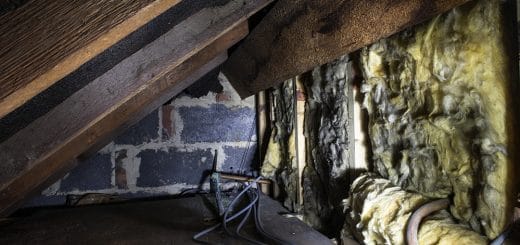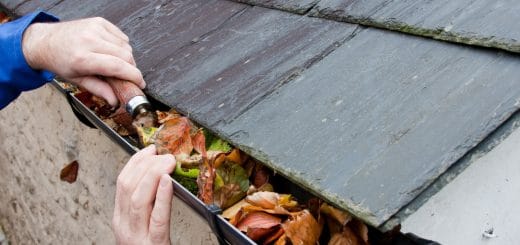Can Mold Grow Within Water Pipes?
MoldMold is a type of fungus that grows in damp or humid conditi... More grows anywhere that is habitable, which means infestations can develop in the basement, inside appliances, and even within water pipes. All the sporesSpores are microscopic reproductive units of fungi or mold t... More need to flourish are darkness, dampness, and an organic food source. It is important to understand how moldMold is a type of fungus that grows in damp or humid conditi... More growth can form within the plumbing system. Call a restoration professional, when you find moldMold is a type of fungus that grows in damp or humid conditi... More.
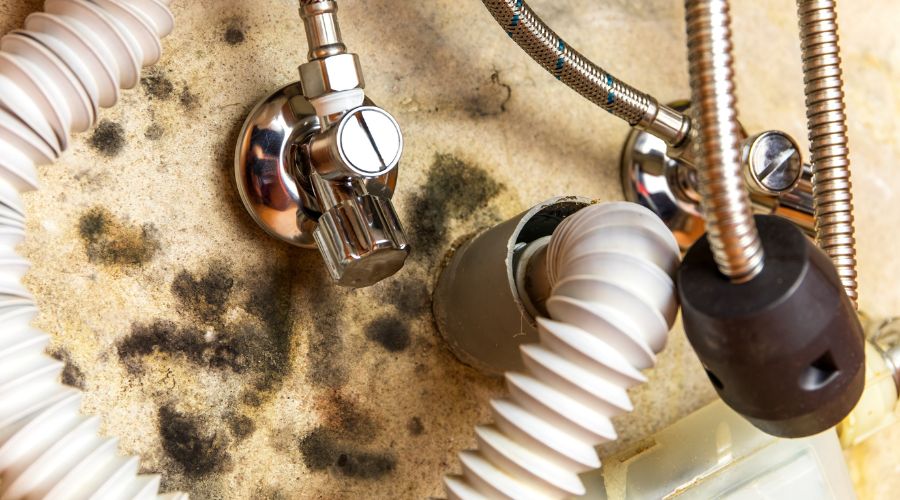
What does mold need to survive?
A prevalent fungus, moldMold is a type of fungus that grows in damp or humid conditi... More thrives in places that are rich in moisture, offer organic materialsOrganic materials are derived from living organisms, such as... More, and provide constant darkness. Organic materialsOrganic materials are derived from living organisms, such as... More inside a typical home that the sporesSpores are microscopic reproductive units of fungi or mold t... More feed upon include drywall, clothing stored in the back of closets, and wooden structural materials.
The water pipes, surprisingly, also contain organic materialsOrganic materials are derived from living organisms, such as... More that nourish the moldMold is a type of fungus that grows in damp or humid conditi... More sporesSpores are microscopic reproductive units of fungi or mold t... More. Dead skin cells, hair, and food remnants pass through the drains and offer an abundant supply of food for moldMold is a type of fungus that grows in damp or humid conditi... More. When the pipes are high in oxygenOxygen is a chemical element essential for combustion and li... More, they are a habitable spot for moldMold is a type of fungus that grows in damp or humid conditi... More.
How mold is found in the water pipes?
MoldMold is a type of fungus that grows in damp or humid conditi... More can find its way into water pipes through various sources, often due to the presence of moisture and organic matter. Here are some common ways moldMold is a type of fungus that grows in damp or humid conditi... More can infiltrate water pipes:
- Leaks and Moisture: Water leaks in the plumbing system can leadLead is a heavy metal that can be toxic to humans, especiall... More to a damp environment that encourages the growth of moldMold is a type of fungus that grows in damp or humid conditi... More. These leaks can be caused by a range of issues, including damaged pipes, cracks or loose fittings.
- High HumidityHumidity is the amount of moisture or water vapor present in... More: Areas with high humidityHumidity is the amount of moisture or water vapor present in... More levels create favorable conditions for moldMold is a type of fungus that grows in damp or humid conditi... More growth. Moisture in the air can condense inside the pipes, especially in poorly ventilated spaces such as basements or crawl spaces. Over time, this moisture can leadLead is a heavy metal that can be toxic to humans, especiall... More to moldMold is a type of fungus that grows in damp or humid conditi... More formation on the inner surfaces of the pipes.
- Water Supply: MoldMold is a type of fungus that grows in damp or humid conditi... More sporesSpores are microscopic reproductive units of fungi or mold t... More present in the surrounding environment can enter water pipes through openings or cracks in the plumbing system. This can occur if the pipes are located in areas where moldMold is a type of fungus that grows in damp or humid conditi... More growth is prevalent, such as damp basements, crawl spaces, or areas with poor ventilationVentilation is the process of exchanging or circulating air ... More.
- Backflow: Backflow, the reverse flow of water in a plumbing system, can introduce contaminants, including moldMold is a type of fungus that grows in damp or humid conditi... More sporesSpores are microscopic reproductive units of fungi or mold t... More, into the pipes. Backflow may occur due to changes in water pressure, faulty valves, or cross-connections with contaminated water sources.
- Organic Material: Organic matter, such as debris, sediment, or even biofilm, can accumulate inside water pipes. These organic substances serve as nutrients for moldMold is a type of fungus that grows in damp or humid conditi... More sporesSpores are microscopic reproductive units of fungi or mold t... More, promoting their growth and proliferation. As water flows through the pipes, it can dislodge these particles, carrying them along and providing a source of food for moldMold is a type of fungus that grows in damp or humid conditi... More.
How do you know if you have mold in your water pipes?
Seeing dark splotches of moldMold is a type of fungus that grows in damp or humid conditi... More is an easy way to tell if an infestation has developed. But it’s difficult to look down a drain and into the pipes without a drain camera. However, homeowners can rely on their sense of smell to locate moldMold is a type of fungus that grows in damp or humid conditi... More instead of using only their visual senses.
MoldMold is a type of fungus that grows in damp or humid conditi... More gives off a musty odorAn odor is a smell, often detectable by the human nose, whic... More that some liken to wet, dirty socks. Or moldMold is a type of fungus that grows in damp or humid conditi... More can exude an earthy smell. When standing near the sink, a musty or earthy odorAn odor is a smell, often detectable by the human nose, whic... More wafting out of it is likely an indication that moldMold is a type of fungus that grows in damp or humid conditi... More has taken hold in the pipes.
It’s also possible to see moldMold is a type of fungus that grows in damp or humid conditi... More in areas near the water pipes, such as the shower, sink or toilet. MoldMold is a type of fungus that grows in damp or humid conditi... More in the pipes can cause a buildup on the sides of the shower wall or appear as dirt-like particles on the sides or bottom of the toilet. Essentially, moldMold is a type of fungus that grows in damp or humid conditi... More growth in the pipes causes infestations elsewhere in the home.
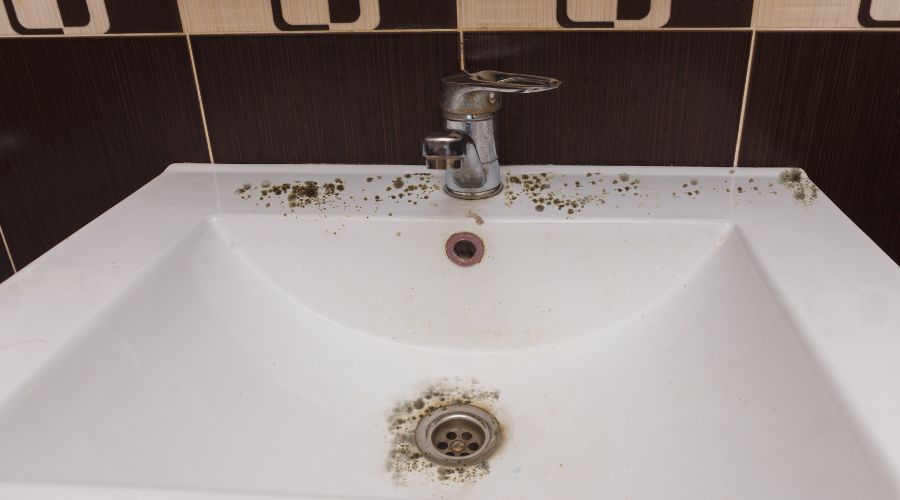
How long does it take for mold to grow in the pipes?
MoldMold is a type of fungus that grows in damp or humid conditi... More is notorious for multiplying rapidly in ideal conditions. The constant dampness of the water pipes spurs moldMold is a type of fungus that grows in damp or humid conditi... More growth within 24 to 48 hours. However, during this early stage, the tiny sporesSpores are microscopic reproductive units of fungi or mold t... More are not visible to the eye. Usually, after 18 to 21 days, the growth becomes apparent.
As the moldMold is a type of fungus that grows in damp or humid conditi... More colonies spread, they release airborne sporesSpores are microscopic reproductive units of fungi or mold t... More into the air. This allows the sporesSpores are microscopic reproductive units of fungi or mold t... More to contaminate other nearby areas that are exposed to consistent moisture, such as the shower walls or the sides of the toilet. Immediate action is critical to preventing a widespread infestation.
How do you get rid of mold in the water pipes?
Colonies flourishing in the water pipes may be successfully eliminated but is best done with professional help due to the complexity involved. First, determine the source of the problem, such as a leak, damage to the plumbing system, or an issue with the local water supply.
Next, take steps to fix the leak or damage. If the area remains consistently damp, increase the ventilationVentilation is the process of exchanging or circulating air ... More. A home with high humidityHumidity is the amount of moisture or water vapor present in... More levels requires a dehumidifierA dehumidifier is a device that removes excess moisture from... More. Discouraging moldMold is a type of fungus that grows in damp or humid conditi... More growth can be achieved by setting the relative humidityRelative humidity (RH) is the percentage of moisture in the ... More to below 50 percent.
Determine the extent of the moldMold is a type of fungus that grows in damp or humid conditi... More infestation and the type inhabiting the pipes by having the water tested by a professional laboratory. Different types of moldMold is a type of fungus that grows in damp or humid conditi... More, such as aspergillus, Cladosporium, penicillium, fusarium, and stachybotrysStachybotrys is a type of black mold (often called “black ... More (a toxic black moldMold is a type of fungus that grows in damp or humid conditi... More), can grow in water.
Identifying the moldMold is a type of fungus that grows in damp or humid conditi... More leads to formulating the appropriate cleanup plan. Once the moldMold is a type of fungus that grows in damp or humid conditi... More is removed from the pipes, disinfect the water system to eliminate any remaining sporesSpores are microscopic reproductive units of fungi or mold t... More. Chlorine tablets, a bleach solutionA solution is a homogeneous mixture of two or more substance... More, and other disinfectants are recommended for the eradication of lingering moldMold is a type of fungus that grows in damp or humid conditi... More.
How do you prevent mold growth in the water pipes?
Regular maintenanceMaintenance is the routine care, inspection, and repair of a... More is key to preventing mold colonies from overtaking the plumbing system. Household staples, like bleach, vinegar, and baking soda help control the moldMold is a type of fungus that grows in damp or humid conditi... More. Once per month, follow these DIY steps to keep moldMold is a type of fungus that grows in damp or humid conditi... More out of the pipes and the colonies from spreading.
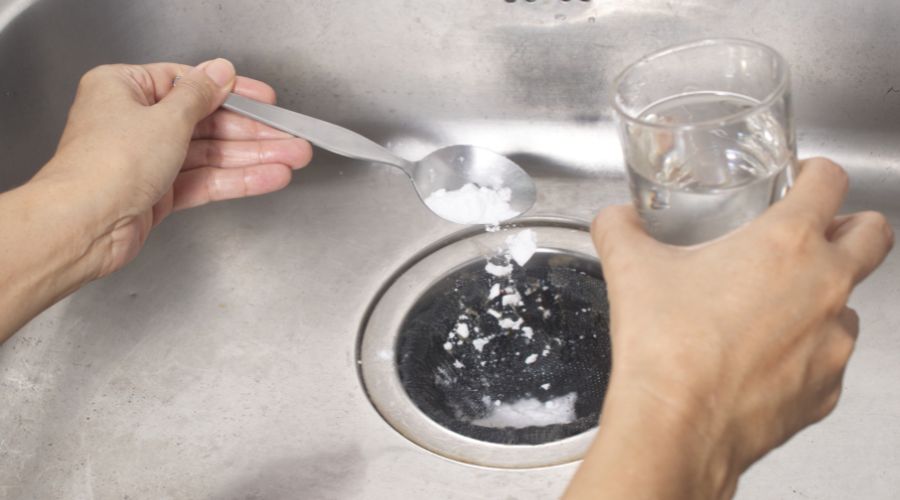
- Start by pouring a half cup of bleach down the pipes, allowing it to sit for an hour. Then pour two cups of boiling water down the drain. Run the hot water tap for several minutes to effectively flush it out.
- Pour a quarter-cup of baking soda down the drain followed by a cup of vinegar and let it sit for 15 minutes. This time frame allows the combination of baking soda and vinegar to adequately kill the moldMold is a type of fungus that grows in damp or humid conditi... More. Finish by pouring two cups of boiling water into the drain. Cleaning the pipes using this method reduces the risk of moldMold is a type of fungus that grows in damp or humid conditi... More growth and exposure.
Other mold preventive measures, you can take are:
- Get your plumbing system checked regularly for leaks and repairRepair is the act of fixing or restoring damaged property, m... More any damaged pipes, fittings, or seals to prevent moisture buildup.
- Maintain and control the humidityHumidity is the amount of moisture or water vapor present in... More levels of you home, especially in enclosed spaces, such as basements, crawl spaces, and bathrooms.
- Insulate your pipes by installing a foam tube. This can maintain the temperature within the pipes.
- When installing or replacing plumbing components, consider using mold-resistant materials, such as PVC or PEX pipes, they are less attracted to moldMold is a type of fungus that grows in damp or humid conditi... More.
- Periodically flush water lines to remove stagnant water and prevent the buildup of sediment or organic matter.
- Install water filtration systems to remove impurities, sediment, and microorganisms from the water supply.
Found Mold? Get Help With Remediation
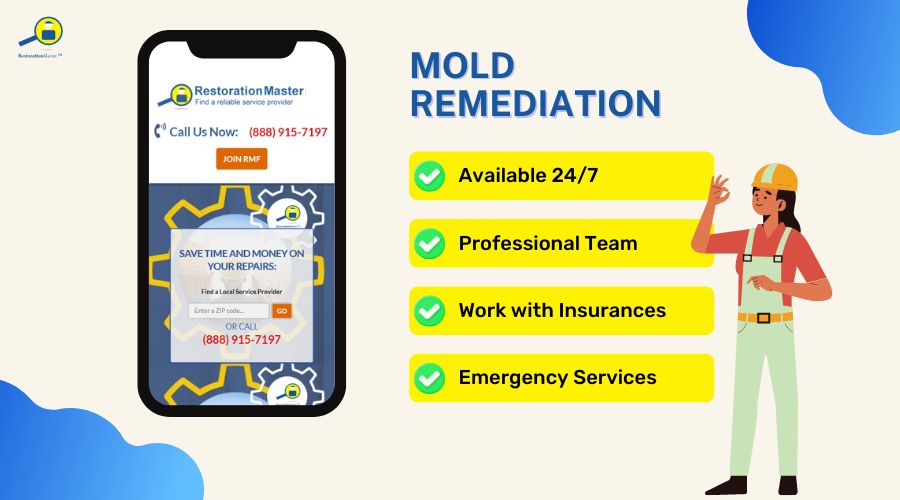
MoldMold is a type of fungus that grows in damp or humid conditi... More growth in pipes poses a significant danger as it contaminates the water supply. Moreover, such infestations can compromise the integrity of the plumbing system, potentially resulting in additional leaks and extensive water damage. To eliminate household moldMold is a type of fungus that grows in damp or humid conditi... More, it’s advisable to seek assistance from a mold remediationMold remediation is the process of identifying, removing, an... More professional.
A reputable mold remediation company possesses substantial experience in moldMold is a type of fungus that grows in damp or humid conditi... More removal. Highly skilled technicians are trained to utilize the latest equipment to detect moldMold is a type of fungus that grows in damp or humid conditi... More, even in concealed areas such as behind walls, under carpets, and inside water pipes. Upon assessing the moldMold is a type of fungus that grows in damp or humid conditi... More growth in your property, they contain the affected areas and operate air filtration systems to prevent cross-contaminationCross-contamination occurs when harmful substances, such as ... More. Technicians clean the moldMold is a type of fungus that grows in damp or humid conditi... More and remove moldy items such as drywall and carpets. A thorough disinfection process is then carried out to eliminate any remaining sporesSpores are microscopic reproductive units of fungi or mold t... More, followed by dryingDrying is the process of removing moisture from materials, s... More the area.
Schedule a consultation with our experts at RestorationMaster today. Get Free Estimate.











